#Chromatic harmonica
Explore tagged Tumblr posts
Text
youtube
ママチャリサイクリング界隈City bike cycling
日本の田舎の景色をどうぞ😃Please enjoy the view of the Japanese countryside😃
使用音声…VOICEVOX:小夜/SAYO
BGM…夢の中へ…[Into the Dream…]
#透明廻廊メゾン#tkmaison#musician#japanese musician#ミュージシャン#japan#japanese countryside#vlog#musician vlog#japanese vlog#サイクリング#ママチャリサイクリング#cycling#youtube#shorts#ミュージシャンの日常#musicianlife#ハーモニカ#クロマチックハーモニカ#harmonica#chromatic harmonica#ほのぼの#田舎#Spotify
2 notes
·
View notes
Text
Diatonic Harp
Welcome to Harmonicaland, where music lovers come to find their perfect diatonic harp! Made with quality materials and precise craftsmanship, this little instrument packs a big punch. Bring your favorites to life and enjoy hours of harmonious melodies with this top-notch instrument.

0 notes
Text
never rly noticed but it's interesting how hibike s1 rides on the high of kitauji getting gold for the kyoto competition, then at the start in s2 it starts to explore the downsides of music competition, and how it was basically the catalyst for so much of the conflict between the characters of the story
#hibike rewatch#i do concur that it's difficult to give a “ranking” to music because there's no right way to perform a piece#and neither is one piece of music better than the other#but without the rigour of a competition or platform for ensembles to come together to perform#i think most school musicians won't be able to achieve that high standard of playing#and again i speak from experience#i never got as good with the bass harmonica as compared to the chromatic harmonica despite playing it for a longer time#because i played the chromatic harmonica during JC where we had our inter-school performing arts showcase#that's when i drilled my technique to near perfection#whereas in uni when i played the bass harmonica it was just for annual concerts and small performances#which weren't as rigourous a stage as compared to being judged
2 notes
·
View notes
Note
I'm so tired, I gotta get some sleep. BUT, before I do. Fanfic writers' meme.
18. If you wrote a sequel to [the fic where Law gets his doctors' licence], what would it involve? (love that fic!)
Ooooh! This is a good one! I love that fic too, if we're being honest. It's a good choice. Early Heart Pirates stuff can be so neat, and adding Law doing real doctor stuff is even better.
So... if I wrote a sequel to Peer Review [FFN/AO3], then it would likely involve the trials and tribulations of actually getting a paper into shape to be published, or he would make a token appearance at a medical conference in Lvneel (or representing Lvneel), and things would get wacky from there. There's lots of ways I can maneuver it... hmm...

Now go get some sleep, my friend.
Want one of these fan fiction questions answered? I'm still taking asks!
#chromatic-lamina#Harmonica Smile#Rescue Remedy#meme replies#One Piece#Trafalgar Law#that man has NOT been to med school but I can confidently say he's passed boards somewhere just to be a shit#and his crew is literally a bunch of enablers don't tell me they wouldn't be cheering him on and supporting him every step of the way#if i write a sequel bc of this that will be something won't it lol#i know who to dedicate it to at least xD
3 notes
·
View notes
Text
moomin hyperfixiation hitting hard again time to whip out my harmonica
#i bought it for completely unrelated reasons. but now all i can think is snufkinmggh#also spring is soon here. moomin season and all that. also i just finished melody of the valley#i shouldve bought a chromatic harmonica tho. anyone wanna give me 30 bucks so i can buy one?
0 notes
Text
Harmonica Bliss: Where to Find the Best Chromatic Harmonicas for Sale?
Harmonica Bliss is your ultimate destination to find the best chromatic harmonicas for sale. With a wide selection of top-quality instruments, Harmonica Bliss caters to harmonica enthusiasts of all skill levels. Whether you're a beginner or a seasoned player, you'll discover an array of chromatic harmonicas that meet your musical needs. Each harmonica is carefully crafted with precision and attention to detail, ensuring exceptional sound quality and playability. Harmonica Bliss takes pride in curating a collection of harmonicas from renowned brands, offering a range of price points to suit every budget. When you shop at Harmonica Bliss, you can be confident in finding the perfect chromatic harmonica to unlock your musical potential.
Wide Selection of Top-Quality Chromatic Harmonicas
At Harmonica Bliss, you'll find a wide selection of top-quality chromatic harmonicas that cater to all levels of players. Whether you're a beginner looking for your first chromatic harmonica or an experienced player seeking an upgrade, Harmonica Bliss has you covered. The collection includes harmonicas from renowned brands known for their craftsmanship and exceptional sound quality. With various models and price ranges to choose from, you can explore different options and find the perfect harmonica that suits your preferences and musical style.
Craftsmanship and Attention to Detail
Harmonica Bliss takes pride in offering chromatic harmonicas that are crafted with precision and meticulous attention to detail. Each harmonica undergoes a rigorous quality control process to ensure superior playability and sound. The harmonicas are made with high-quality materials that enhance their durability and longevity, allowing you to enjoy them for years to come. With their exceptional craftsmanship, these harmonicas deliver a smooth and effortless playing experience, making them a joy to play and explore your musical creativity.
Exceptional Sound Quality
When it comes to chromatic harmonicas, sound quality is paramount, and Harmonica Bliss understands this importance. The harmonicas available at Harmonica Bliss are chosen for their exceptional sound quality, allowing you to produce clear, rich, and expressive tones. Whether you're playing blues, jazz, classical, or any other genre, these harmonicas will impress you with their tonal characteristics and dynamic range. Harmonica Bliss ensures that each harmonica meets the highest standards of sound quality, providing you with an instrument that truly elevates your musical performance.
Curated Collection from Renowned Brands
Harmonica Bliss curates its collection of chromatic harmonicas from renowned brands in the harmonica industry. These brands are known for their expertise, innovation, and commitment to producing high-quality instruments. By selecting harmonicas from these trusted brands, Harmonica Bliss ensures that you have access to the best chromatic harmonicas on the market. Whether it's Hohner, Suzuki, Seydel, or other reputable brands, you can be confident that you're investing in an instrument that has a solid reputation for excellence.
Suitable for All Budgets
Harmonica Bliss understands that everyone has different budget considerations, and that's why they offer chromatic harmonicas at various price points. Whether you're looking for an affordable entry-level harmonica or a top-of-the-line professional instrument, Harmonica Bliss has options to suit your budget. The goal is to make high-quality chromatic harmonicas accessible to all players, ensuring that price doesn't limit your ability to own a fantastic instrument. With their diverse range of options, Harmonica Bliss allows you to find the best chromatic harmonica that fits your budget without compromising on quality.
Expert Guidance and Support
At Harmonica Bliss, you're not just purchasing a chromatic harmonica; you're also gaining access to expert guidance and support. The team at Harmonica Bliss is passionate about harmonicas and is knowledgeable about the products they offer. They can assist you in choosing the right harmonica based on your skill level, preferences, and musical goals. Whether you have questions about a specific model or need advice on maintenance and care, the friendly and experienced staff at Harmonica Bliss is ready to help you make an informed decision and ensure your harmonica journey is a blissful one.
Your Destination for Chromatic Harmonicas
When it comes to finding the best chromatic harmonicas for sale, Harmonica Bliss is your go-to destination. With its wide selection, emphasis on craftsmanship and sound quality, curated collection from renowned brands, accessibility to all budgets, and expert guidance, Harmonica Bliss offers everything you need to find the perfect chromatic harmonica. Whether you're a beginner, an intermediate player, or a professional musician, Harmonica Bliss is dedicated to providing you with the harmonica that meets your expectations and inspires your musical journey. Experience the bliss of playing chromatic harmonicas with Harmonica Bliss as your trusted source.
Conclusion
Harmonica Bliss stands out as the ultimate destination for those in search of the best chromatic harmonicas for sale. With their wide selection of top-quality instruments, meticulous attention to craftsmanship, and emphasis on exceptional sound quality, Harmonica Bliss caters to harmonica enthusiasts of all levels. Their curated collection from renowned brands ensures that you can find the perfect harmonica to suit your musical style and preferences. With options available for every budget and expert guidance and support, Harmonica Bliss provides a blissful harmonica shopping experience. Trust Harmonica Bliss to be your go-to destination for finding the best chromatic harmonicas that will elevate your musical performance to new heights.
0 notes
Text
The thing that bothers me about people trying to declare that Blaze and Silver have a sibling relationship in Sonic '06 is that the way Blaze says "you're still so naïve, but I...I've always liked that about you" is just so incredibly weird to say to someone whom you consider like a sibling.

No matter how I slice it, it's giving flirty vibes. Not to mention the music gets so playful after quoting Silver's main theme when he asks "you're my friend, right?"

Blaze: "you're so naïve. I've always liked that about you."
Honestly, if I had the time, I would strain my ear to transcribe the music in that scene because the chromatic variation on "Dreams of Absolution" by the orchestra has a really romantic musical tone which reminds me of the song "Shulk and Fiora" from Xenoblade which is a chromatic variation on the main theme (the harmonica in that is, mmm *chef's kiss*).
And the parallel between Silver and Amy where she said she would choose Sonic over the world while Silver wasn't able to choose the world over Blaze. Silver was so ready to end one person to save the world, became conflicted when Amy challenged that, and was willing to sacrifice himself but he couldn't sacrifice the one closest to him to save the world. She had to make that choice for him.

The tragic romance is absolutely there. It's fine to have headcanons and not like a particular ship, but trying to call it "problematic" by pretending it's something it's not is just so pathetic.
I'm legit so hungry for tragic Silvaze. Give me the bitter sweet sadness. Doomed by the narrative. Legit "Your Name" vibes.

96 notes
·
View notes
Note
Hello 💕 hopefully you’re hyped for some brand new Muse! I’d love to know your top ten (or five, totally up to you) Muse songs and why if you feel like sharing ✨
Hello lovely! 💖 I am very excited for new Muse, but as with every new Muse era I also feel like I need at least a solid fortnight to psych myself up for their return 😅 I am also 100% willing to drop everything and yell about my favourite Muse songs at any opportunity (a truly accurate list would honestly include about 40 songs but I'll spare you...) so here's a Top Ten in no particular order! I'd also love to know your faves as well 💖
Knights of Cydonia - Banger. Absolute banger. No notes. One of the best live songs of all time - especially when combined with Chris's lovely 'Man With A Harmonica' intro - and it's no exaggeration to say that I would be a completely different person today if I hadn't discovered this song on Guitar Hero III as an impressionable 12-year-old.
Blackout - For a long time this wasn't just my favourite Muse song but my favourite song full-stop, and while I don't know if that's still the case, it remains one of the most beautiful songs that Matt has ever written both lyrically and musically. One of those songs that I tended to skip when I first listened to Absolution, but when it finally hit it did so with a sucker-punch to the chest.
Megalomania - Another song that took a couple of listens to truly appreciate, but I viscerally remember the first time I fell in love with it after hearing that final organ chord blare through the car speakers. The menacing church organ and Matt's dramatic vocal duet with himself in that final minute is fucking exquisite.
Exogenesis Symphony - Technically cheating by choosing three songs here, but I can't bring myself to separate them. I gained such a love and appreciation for orchestra/classical music through my love of Muse and this is one of the pieces that changed my life as an impressionable child. Still one of the most beautiful pieces of music they've ever produced and the excitement of seeing Overture live at my first Muse gig is seared onto my soul.
Glorious - Had to show some love to the other half of my online namesake 😅 This song always takes me back to the excitement of discovering Muse b-sides and this one remains my favourite; the chaos of the opening few seconds fading into sheer beauty and the use of a chromatic scale in the chorus to build tension... *chef's kiss*.
Butterflies and Hurricanes - The hours I spent trying (and mostly failing) to learn that piano solo as a teen... 😅 One of many Muse songs where the brilliance of the studio cut still fails to hold a candle to the magic of the live version. HAARP remains the gold-standard, but seeing this for myself live in Dublin was a true bucket-list moment.
Isolated System - Dark, melancholic instrumental Muse at its finest. Feels fitting that it wound up being the theme to a zombie film because it appealed directly to the part of my brain that was obsessed with the 28 Days Later theme back in the day 😅💖
Take A Bow - One of those songs that truly hasn't aged a day, even if lyrically I wish it had 😅 The tension in those synth chords is so addictive to listen to and the descent into madness at the halfway mark never fails to get me hyped even after all these years.
Space Dementia - Basically, if there's a song where Matt is being a total classical nerd on the piano, I am a fan. An obsessive fan. The instrumental is incredible enough, but the lyric 'You make me sick because I adore you so'??? I still haven't recovered.
The Globalist - I was really struggling with my tenth pick because (as you'll see) there are so many honourable mentions. This song used to sit more comfortably in my top ten but - as with many Muse songs - its lyrical themes have aged a little *too* well to the point where it's become a rather painful listen. That being said, it's still very impressive; the David Gilmour/Morricone-esque opening is beautiful and the countdown leading into that chaotic guitar solo is still one of my favourite moments in any Muse song.
Aaaand have a ton of honourable mentions (because narrowing down my faves to just ten is impossible 😅): Showbiz, Unintended, Piano Thing, Bliss, Futurism, Dead Star, Shine (Acoustic), Apocalypse Please, Endlessly, Sing For Absolution, Hysteria, Hoodoo, Panic Station, The Handler, The Dark Side, The Void, We Are Fucking Fucked, Verona, Kill or Be Killed.... and my sister's favourite Muse song of all time, Invincible (HAARP version my beloved) 🥰
#muse#muse band#even with an endless list of honourable mentions I just know there'll be a ton I've forgotten#the joys of loving and growing up with a band for most of your life... 🥰#a common trend with my fave songs is that I fell in love with them through their live versions which is partly why my list is so heavy on -#- early Muse#@Muse release live versions of the Simulation Theory/WOTP tracks I am *begging*
13 notes
·
View notes
Text
Chromatic Harmonica Raga - Canned Heat
youtube
7 notes
·
View notes
Text
youtube
Heitor Villa-Lobos (1887-1959) - Concerto for Harmonica and Orchestra
I. Allegro Moderato II. Andante III. Allegro
Kelin Leung, harmonica
Final Stage at the 1st International Chromatic Harmonica Competition Orchestra: Hong Kong City Chamber Orchestra Conductor: Mr. Robert Reimer
4 notes
·
View notes
Text
楽器マニアめぞんぬし まとめ2 Musical instrument mania maison-nushi Summary 2
・クライネソプラニーノリコーダー
・バスオカリナ
・クロマチックハーモニカ
・エレキギター
・テナーリコーダー
・Kleine sopranino recorder
・Bass ocarina
・Chromatic harmonica
・Electric guitar
・Tenor recorder
#インスト#instrumental#オリジナル曲#original music#透明廻廊メゾン#tkmaison#クライネソプラニーノリコーダー#Kleine sopranino recorder#バスオカリナ#bass ocarina#リコーダー#オカリナ#recorder#ocarina#クロマチックハーモニカ#Chromatic harmonica#chrometta#ギター#エレキギター#guitar#electric guitar#テナーリコーダー#tenor recorder#楽器#楽器マニア#musical instrument mania#作曲#composition#music#short movie
2 notes
·
View notes
Text
Chromatic Harmonica for Sale
Explore a diverse selection of chromatic harmonicas for sale, perfect for musicians of all skill levels. These versatile instruments feature a rich, expressive sound, ideal for jazz, blues, and classical music. Available in various brands and styles, each harmonica is designed for comfort and performance. Enhance musical creativity with a chromatic harmonica today!
0 notes
Text
Price: [price_with_discount] (as of [price_update_date] - Details) [ad_1] Product Description Classic CONJURER harmonica uses a 1mm thick phosphor bronze reed, making it easier for the player to get higher pitch, richer sound and tone.Fully handmade, the exterior pattern is laser-engraved technology, and the material is light and weighs only 0.08kg, making it easy to carry. Professional CONJURER harmonica is made of ABS comb, and the exterior design has a note like silky smoothness, so the mouth can get a good touch when playing and experience the musical delicacy. Services CONJURER harmonica will come with stylish packaging and a black soft bag so that you can take the harmonica with you to some music sessions, and there is a professional instruction manual in the package to help beginners progress quickly. TECHNICAL DETAILS Reed plates (material): Thickness Reed Plate Reed plates (thickness): 1MM Reed plates (surface): Brass Reeds (number): 48, Brass Comb (material, color): Black Comb (finish): Triple lacquered Mouthpiece (surface): Bamboo Cover plates: Stainless Steel Keys: C Type: Chromatic Tuning: Richter Number of holes: 12 Tonal range: 6 Octaves Length: 5.5Inch 🐨【Design】:The harmonica design is compact and stylish, the shell is hand polished, the smooth shell brings a better touch, while the inner core of the harmonica is tested 500 times for air tightness, the exterior of the harmonica uses electroplating processing and laser printing, so that every tone is full of musical soul. 🐨【Material】:The
harmonica is made of aluminum alloy with high density material, which will not let the harmonica rust and produce the trouble of sound change. The harmonica uses phosphor bronze reed inside and ABS resin comb.The weight of the harmonica is only 0.08kg, which is convenient for users to carry. 🐨【Size】:The harmonica is 5.5Inch long and 1.7Inch wide, with 12 holes and 48 tones. The design of the harmonica is based on the ergonomic theory, which will make the harmonica user not feel fatigue due to long time use. 🐨【Applicable people】:The harmonica is suitable for harmonica lovers of all stages, and the design has been improved for different harmonica lovers, so that beginners can get started quickly, and some veteran harmonica performers can better express their emotions through the art of harmonica. 🐨【Gift】:Harmonica is a symbol of elegance and if you don't know what gift to choose for a friend, this harmonica will reduce the pain. With two layers of packaging, the harmonica will fill the person receiving the gift with anticipation, and ultimately the power of music will answer everything! [ad_2]
0 notes
Text
The Golem Reawakened: An Essay on Nabokov's Forgotten Opera
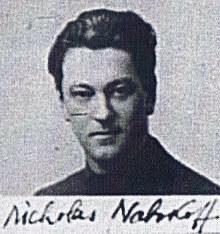
I. Sound and Stone: The Musical Architecture of Le Golem
Nicolas Nabokov’s Le Golem (1962) is a product of fractured identities: musically post-tonal, thematically mystical, and dramatically modernist. The opera traverses a sonic architecture as enigmatic and immobile as the stone creature at its heart. From the opening measures, Nabokov rejects overt lyricism in favor of brittle, expressionist angularity. Yet, beneath the surface of what might initially seem like a dissonant landscape lies a meticulously structured interplay of motives, textures, and timbral symbolism.
The opera’s tonal center is non-existent in the traditional sense. Nabokov instead builds thematic coherence through intervallic cycles, particularly fourths and tritones, which mirror the instability and artificiality of the Golem himself. The orchestration is chamber-like, despite being scored for a full orchestra, allowing for stark juxtapositions between solo instruments—especially the bass clarinet and muted trombone, which emerge as musical avatars for the Golem's breath and weight.
Each of the main characters is marked by leitmotif-like cells, yet these are not developed Wagnerian motifs but rather sonic fragments that appear like the Golem: assembled, shaped, but devoid of organic continuity. For instance, the motif associated with Rabbi Loew begins as a rising minor sixth (often played by solo viola) and gradually accrues pitch extensions through harmonic overtones. The Golem's motif is, fittingly, constructed from percussive repetition—slapped cellos and bowed vibraphones—echoing his sculptural origins.
Nabokov also exploits synthetic modes derived from Eastern European liturgical chants, particularly the Ahavah Rabbah mode, which brings a dark, chromatic flavor that evokes Kabbalistic mystery without pastiche. Choral writing, used sparingly, often floats in microtonal dissonances, suggesting a spiritual tension unresolved by traditional harmonic closure. It’s as if the music itself cannot reconcile the sacred with the profane, echoing the opera’s thematic dilemma.
Expanded Technical Analysis
The harmonic language of Le Golem blends post-tonal serialism with modal referentiality, avoiding strict twelve-tone construction while exploiting pitch-class sets to establish dramatic coherence. Nabokov employs interval-class 1 and 6 (minor second and tritone) as structural devices across the opera, and motivic unity is often accomplished through the manipulation of unordered pitch-class sets, such as [0,1,4] and [0,3,6].
A particularly striking structural device is his use of isomorphic mirror inversion within scenes of spiritual or magical intensity. For example, in the moment Loew inscribes the shem into the Golem's mouth, the underlying harmonic structure rotates around a central axis (often D or E-flat), mirroring both melodically and registrally. This creates a sensation of ritual geometry, reminiscent of Sator Squares and Kabbalistic diagrams.
Rhythmically, Nabokov’s textures often resemble the fractured pulse of sprechstimme, even when written for instruments. He favors asymmetrical ostinati—5/8, 7/8, or additive meters like 3+3+2—and layers them to create rhythmic ambiguity. These metrical disjunctions reflect the Golem’s halting, unnatural gait and the disrupted spiritual order of the community.
The opera’s middle section features a stunning twelve-tone choral passacaglia, built not from a single row but from four interlocked tetrachords, each associated with a different moral stance (Loew’s devotion, Miriam’s empathy, the crowd’s fear, the Golem’s silence). Their permutation across voice parts produces a dense, almost Ligeti-like cloud of human intent, never resolving into clarity.
Timbral choices in Le Golem are also intricately aligned with psychological states. For instance:
Glass harmonica and celesta accompany moments of divine invocation.
Muted brass articulates fear or spiritual dissonance.
Contrabassoon and contralto flute are reserved for the Golem’s rare internal monologues or symbolic presences, even if wordless.
The final scene is an anti-cadence, built from downward whole-tone motion in the strings, leading to a final unresolved clash between F-sharp and G-natural—symbolizing the Golem’s final breath, and the unspeakable weight of an act both sacred and tragic.
II. Clay and Desire: A Romantic Lens on the Story
The legend of the Golem is typically treated as a cautionary tale about hubris, control, and divine law. Nabokov’s Le Golem, however, approaches the myth with a strange tenderness, exposing the deeply romantic yearning at its center—not romantic in the sentimental sense, but in the tragic, sublime sense of wanting the impossible: to give soul to the soulless, to love the unloved, to speak the ineffable.
In this version, the Golem is not a silent enforcer but a mute observer—a presence heavy with implied consciousness. His creator, Rabbi Loew, emerges not simply as a wise Kabbalist but as a man tormented by longing: for safety, for transcendence, and for the companionship of a being who can never reciprocate.
The opera's emotional core rests not in action, but in the triangular psychic tension between Loew, the Golem, and Miriam, Loew’s daughter. Miriam sees in the Golem a purity and tragic nobility absent in the men of her world. Their relationship—though never consummated or spoken aloud—becomes a sort of metaphysical romance: the idea that love, even unreturned, can awaken the divine spark in the inanimate.
There is a pivotal scene in Act II where Miriam sings alone in the Golem's presence, a haunting aria suspended over a shimmering, unresolved harmonic field. She sings not to him, but into him, as though her words might echo within his unformed soul. This is where Nabokov’s vision diverges sharply from tradition: the Golem is not merely a tool of divine justice but a being with the capacity for becoming.
The tragic climax—where Loew, fearing the Golem's awakening autonomy, reclaims the shem (the magical word animating him) and returns him to dust—reads not only as theological reassertion but as a father’s jealous destruction of that which he cannot control or understand. What lingers is the mournful silence afterward, broken only by the wind moving through an empty synagogue.
III. Legacy and Relevance: The Golem in the 21st Century
Le Golem remains largely forgotten in the modern repertoire, overshadowed by more accessible or politically resonant works of its time. Yet in today’s cultural climate—marked by anxieties over AI, biotechnology, and the ethics of creation—Nabokov’s opera is perhaps more relevant than ever.
The Golem is the original artificial intelligence, a creature shaped by human will, feared for its potential autonomy, and ultimately destroyed for not conforming to its intended function. Contemporary reinterpretations of the Golem myth often focus on this angle, yet Nabokov's opera adds a spiritual and emotional depth that is rarely explored: the idea that creation is also a mirror, revealing the flaws and longings of its creator.
Moreover, the opera's musical language—once considered too brittle or modern—is now ripe for rediscovery. In an era where audiences have embraced spectralism, hybrid tonalities, and microtonal choral work, Nabokov's score might finally find a sympathetic ear. Its very strangeness makes it a candidate for revival by daring opera houses and festivals seeking to challenge audiences beyond standard fare.
There is also a growing appetite for works that explore Jewish mysticism and folklore beyond the usual tropes, particularly in post-Holocaust Europe and North America. Le Golem offers a way into that conversation—less through religious dogma than through psychological and emotional resonance.
Whether revived as chamber opera, immersive theater, or digital installation, Le Golem has the potential to reclaim its voice. Like its namesake, it awaits only the right incantation to awaken.
In conclusion, Le Golem is an opera of rare alchemy: musically thorny, philosophically rich, and emotionally aching. It is a tale of clay and soul, echoing the eternal tension between creation and destruction, silence and song. In a world ever more captivated by the power and peril of the things we make, Nabokov’s Golem may finally be ready to rise again—not to protect us, but to teach us.
0 notes
Text
Happy birthday, Stevie Wonder, born on this day in 1950

Happy birthday, Stevie Wonder, born on this day in 1950.Best Sheet Music download from our Library.Please, subscribe to our Library.Stevie Wonder: A Musical Genius Beyond CompareBiography"Music is a world within itself / With a language we all understand." – Stevie Wonder, "Sir Duke"Browse in the Library:Musical Style & InnovationsSignature Licks & RiffsInfluences & LegacyEssential WorksDocumentaries & PerformancesBrowse in the Library:Stevie Wonder - Living for the CityHarmonic Breakdown: Stevie Wonder’s "Living for the City"Song Structure & Overview
Happy birthday, Stevie Wonder, born on this day in 1950.
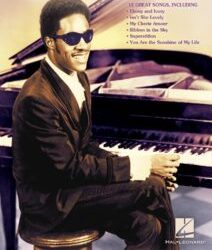
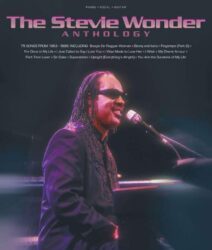
Stevie Wonder: A Musical Genius Beyond Compare
Stevie Wonder (born Stevland Hardaway Morris, May 13, 1950) is one of the most influential musicians of the 20th century. A child prodigy turned global icon, Wonder mastered multiple instruments, pioneered groundbreaking recording techniques, and composed timeless hits blending soul, funk, R&B, jazz, and pop. Blind since infancy, Wonder’s extraordinary musical intuition and innovative spirit have earned him 25 Grammy Awards, an Academy Award, and induction into the Rock & Roll Hall of Fame. In this article: - His biography (early life, rise to fame, career evolution) - Musical style (harmony, rhythm, vocal techniques) - Signature licks & harmonic innovations - Influences & legacy - Key works, filmography, and discography - Documentaries & essential performances
Biography
"Music is a world within itself / With a language we all understand." – Stevie Wonder, "Sir Duke"
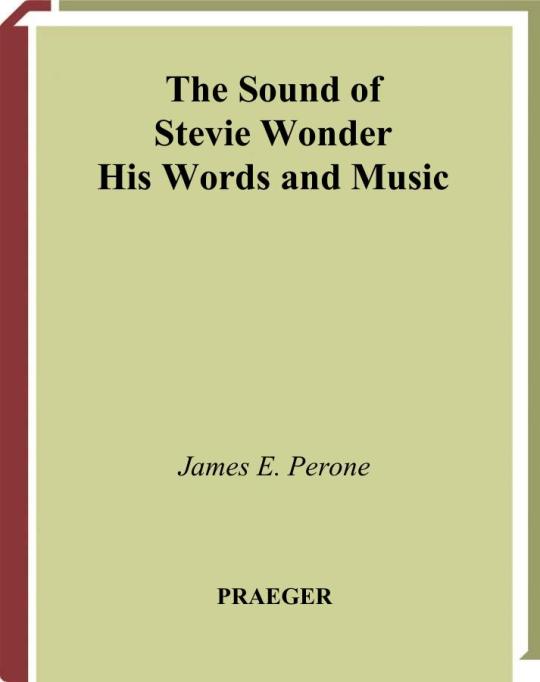
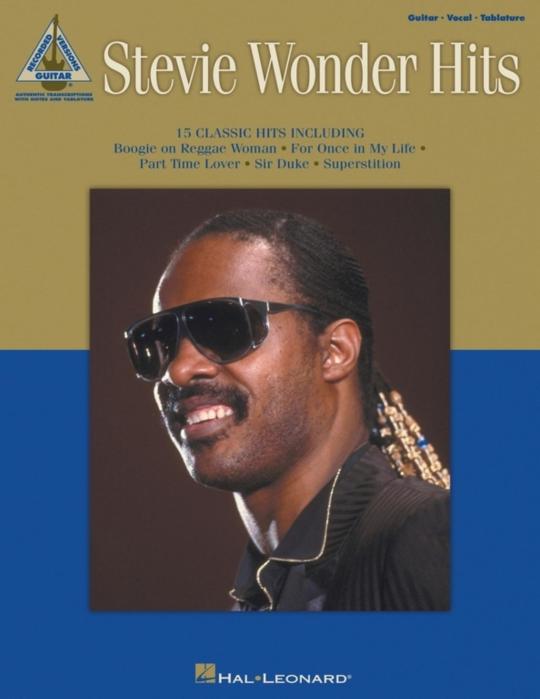
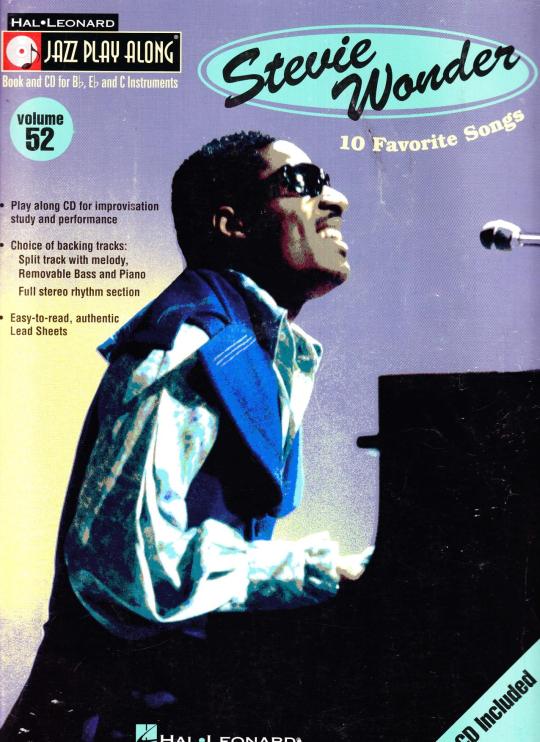
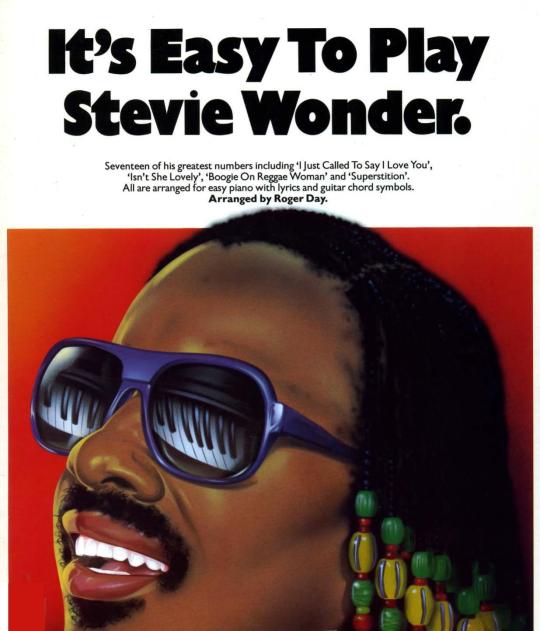
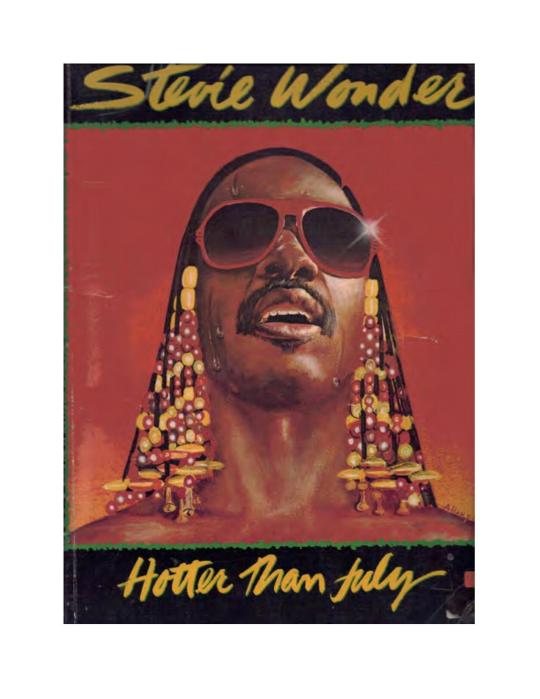
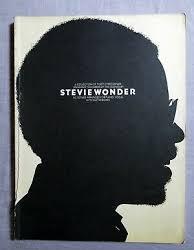
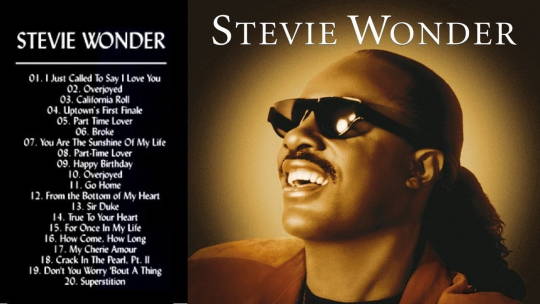
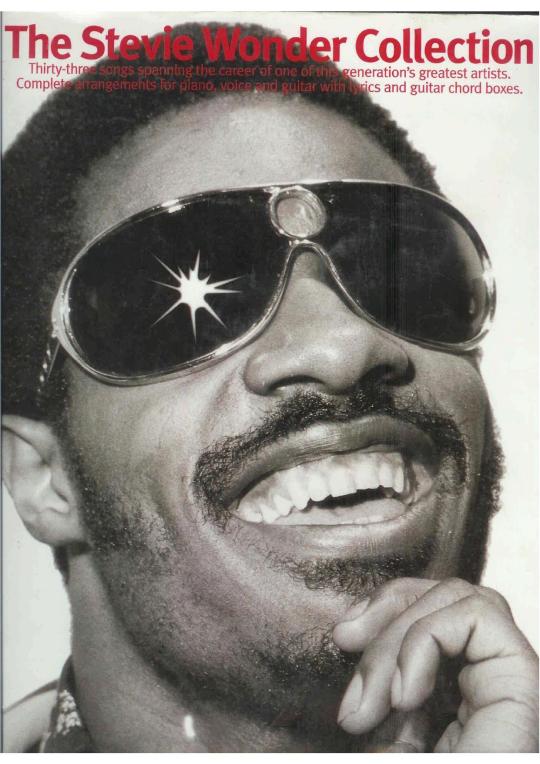
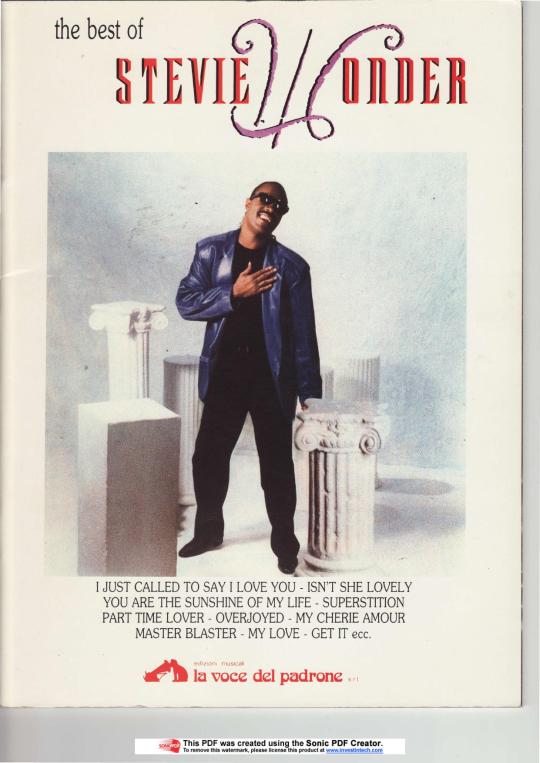



Early Life & Discovery (1950–1961) Born in Saginaw, Michigan, Stevie Wonder was prematurely blinded due to retinopathy of prematurity. Despite this, he displayed prodigious musical talent early on, teaching himself piano, harmonica, and drums by age 5. At age 11, he was discovered by Ronnie White of The Miracles, who arranged an audition with Motown’s Berry Gordy. Impressed, Gordy signed him as "Little Stevie Wonder"—a name reflecting his youthful energy and astonishing skill. Motown Years (1962–1971) Wonder’s early hits included: - "Fingertips (Pt. 2)" (1963) – A live, improvised harmonica-driven hit. - "Uptight (Everything’s Alright)" (1965) – His first major songwriting contribution. - "Signed, Sealed, Delivered I’m Yours" (1970) – Co-written with his mother, Syreeta Wright. Despite success, Wonder chafed under Motown’s control, seeking artistic independence. Golden Era (1972–1980): The Classic Albums After negotiating full creative control at 21, Wonder entered his peak period, producing masterpieces like: - "Music of My Mind" (1972) – First full artistic statement. - "Talking Book" (1972) – Featuring "Superstition" and "You Are the Sunshine of My Life." - "Innervisions" (1973) – Socially conscious hits like "Higher Ground" and "Living for the City." - "Songs in the Key of Life" (1976) – A double-LP masterpiece with "Isn’t She Lovely," "Sir Duke," and "I Wish." Later Career & Legacy (1980–Present) - 1980s: Hits like "I Just Called to Say I Love You" (1984, Oscar-winning) and "Part-Time Lover" (1985). - 1990s–2000s: Collaborations with Prince, Michael Jackson, and rap artists. - 2010s–Present: Political activism, live performances, and influence on modern R&B.
Musical Style & Innovations
Harmony & Chord Progressions Wonder’s music blends: - Jazz-influenced extended chords (9ths, 11ths, 13ths) - Modal interchange (borrowing chords from parallel scales) - Chromatically descending basslines (e.g., "Superstition") Example progression (from "Isn’t She Lovely") | Ebmaj7 | D7#9 | G-7 | C7 | | F7 | Bb7 | Ebmaj7 | Abmaj7 | - Uses secondary dominants (D7#9 → G-7) and borrowed chords (Abmaj7 in Eb). Rhythm & Groove - Syncopated clavinet riffs ("Superstition") - Polymeters (e.g., "Higher Ground" in 4/4 but with implied 6/8 feel) - Half-time shuffle grooves ("Boogie On Reggae Woman") Vocal Techniques - Melismatic phrasing (influencing Mariah Carey, Beyoncé) - Call-and-response ad-libs ("Don’t You Worry ‘Bout a Thing") - Harmonized multi-tracking ("As")
Signature Licks & Riffs
1. "Superstition" Clavinet Lick E7#9 (E-G#-D-G) → A7sus4 (A-D-E-G) - Built on the Mixolydian mode with bluesy #9 tension. 2. "I Wish" Bassline & Syncopation | F7 | E7 | D7 | C7 | - Funky chromatic walkdown in the bass. 3. "Sir Duke" Horn-Like Keyboard Lines - Emulates big-band jazz phrasing with pentatonic runs.
Influences & Legacy
Key Influences on Stevie - Ray Charles (vocals, piano) - Nat King Cole (phrasing) - Jimi Hendrix (harmony) - The Beatles (songwriting) Artists He Influenced - Prince (multi-instrumentalism) - Michael Jackson (melodic hooks) - D’Angelo, Erykah Badu (neo-soul movement) - Bruno Mars, Anderson .Paak (modern funk revival)
Essential Works
Studio Albums YearAlbumKey Tracks1972Talking Book"Superstition," "You Are the Sunshine of My Life"1973Innervisions"Higher Ground," "Living for the City"1976Songs in the Key of Life"Isn’t She Lovely," "Sir Duke," "I Wish"1984The Woman in Red"I Just Called to Say I Love You" Filmography - "Stevie Wonder’s Journey Through the Secret Life of Plants" (1979, soundtrack) - "The Woman in Red" (1984, contributed soundtrack) - "Sing Your Song" (2011, documentary appearance)
Documentaries & Performances
Documentaries - "Stevie Wonder: Musiquarium" (1982) - "Classic Albums: Songs in the Key of Life" (2012) - "BBC’s Stevie Wonder at the BBC" (2008) Must-Watch Performances - Superstition (Live, 1973) – Raw funk energy. - Isn’t She Lovely (Harmonica Solo) – Emotional depth. - Sir Duke (Live at Glastonbury) – Crowd-commanding brilliance. Stevie Wonder’s boundless creativity, technical mastery, and emotional depth make him a once-in-a-generation artist. From Motown child star to visionary auteur, his work continues to inspire musicians across genres.
Stevie Wonder - Living for the City
https://www.youtube.com/watch?v=rc0XEw4m-3w Lyrics: A boy is born in hard time Mississippi Surrounded by four walls that ain't so pretty His parents give him love and affection To keep him strong, moving in the right direction Living just enough, just enough for the city His father works some days for fourteen hours And you can bet, he barely makes a dollar His mother goes to scrub the floors for many And you'd best believe, she hardly gets a penny Living just enough, just enough for the city His sister's black, but she is sho'nuff pretty Her skirt is short, but Lord her legs are sturdy To walk to school, she's got to get up early Her clothes are old, but never are they dirty Living just enough, just enough for the city Her brother's smart, he's got more sense than many His patience's long, but soon he won't have any To find a job is like a haystack needle 'Cause where he lives they don't use colored people Living just enough, just enough for the city, yeah Everybody, city, yeah (Living just enough for the city, whoa) Ain't nothin' but the city (Living just enough for the city, whoa) Everybody, city, yeah (Living just enough for the city, whoa) Ain't nothin' but the city (Living just enough for the city, whoa) Living for the city, yeah (Living just enough, for the city, whoa) The funky, cryin' city (Living just enough, for the city, whoa) Living for the city Ain't nothin' but the city (Living just enough, for the city, whoa) Everybody clap you hand together now (Living just enough, for the city, whoa) For the city (Living just enough, for the city, whoa) For the city, yeah, yeah (Living just enough, for the city, whoa) (Living just enough, for the city, whoa) The bus for New York City! Hey bus driver, I'm getting on that, hold it Thanks a lot Wow, New York, just like I pictured it Skyscrapers and everything Psst, hey, hey brother, hey come here slick Hey you look, you look hip man Hey, you wanna make yourself five bucks, man? Yeah, brother Look here, run this across the street for me right quick Okay, run this across the street for me What? (Up against that goddamn car!) Huh? (Let's go) I didn't know, what? Gimme your hands up, you punk I'm just going across the street Put that leg up, shut your mouth Hell no, what did I do? Okay, turn around, turn around Put your hands behind your back, let's go, lets go A jury of your peers having found you guilty, ten years What? Come on, come on, get in that cell, nigger God, Lord His hair is long, his feet are hard and gritty He spends the life walking the streets of New York City He's almost dead from breathing in air pollution He tried and fought, but to him there's no solution Living just enough, just enough for the city (yeah, yeah, yeah) I hope you hear inside my voice of sorrow And that it motivates you to make a better tomorrow This place is cruel, nowhere could be much colder If we don't change, the world will soon be over Living just enough, stop giving just enough for the city.
Harmonic Breakdown: Stevie Wonder’s "Living for the City"
Stevie Wonder’s "Living for the City" (from Innervisions, 1973) is a masterclass in storytelling through harmony, rhythm, and production. A socially charged funk-soul epic, the song blends minor-key grit, chromatic tension, and dramatic modulations to reflect urban struggle. Below, we dissect its chord progressions, bass movement, and harmonic innovations.
Song Structure & Overview
- Key: D minor (primary tonality) - Form: Verse-Chorus-Bridge with spoken interlude & key shifts - Time Signature: 4/4 (with syncopated 16th-note grooves) - Harmonic Themes: - Blues-inflected minor funk (verse) - Uplifting major-key contrast (chorus) - Dramatic chromatic descent (bridge) Verse: D Minor Blues with a Funky Twist The verse establishes a D minor groove with pentatonic riffs and bluesy extensions. Chord Progression (Simplified): | D-7 | D-7 | C7 | F7 | | Bb7 | A7 | D-7 | D-7 | Analysis: - D-7 (i7) – Rooted in D Dorian (D-E-F-G-A-B-C), giving a soulful minor vibe. - C7 (bVII7) → F7 (III7) – Borrowed from D harmonic minor, adding blues tension. - Bb7 (VI7) → A7 (V7) – A chromatic walkdown (Bb → A) intensifying the return to D-7. Bassline & Syncopation: The bass outlines the chords with syncopated 16th-note grooves, locking with the clavinet: D (root) → C (b7) → Bb (6) → A (5) Chorus: Major-Key Liberation The chorus shifts to F major, offering hope amid struggle. Chord Progression: | F | C/E | D-7 | Bb | | F | C/E | D-7 | A7 | Analysis: - F (IV in D minor, I in F major) – A modal interchange pivot, brightening the mood. - C/E (V with bass motion) – Smooth voice-leading (E → F in the bass). - D-7 (vi) → Bb (IV) – A plagal cadence feel, gospel-inspired. - A7 (V7/ii) – Leads back to D minor, reinforcing the song’s tonal center. Why It Works: - The shift to F major mirrors the lyrics’ theme of aspiration. - Voice-leading: The top melody notes (A → G → F) create a sighing resolution. Bridge: Chromatic Descent & Drama The bridge ("His hair is long…") uses descending chromatic harmony to heighten tension. Chord Progression: | G7 | F#7 | F7 | E7 | | A7 | D-7 | (Repeat) | Analysis: - G7 → F#7 → F7 → E7 – A chromatic line cliché (G → F# → F → E in the bass). - Each chord acts as a secondary dominant (e.g., G7 = V/vi, F#7 = V/V, etc.). - A7 (V7) → D-7 (i) – A strong cadence back to the verse. Emotional Impact: - The half-step motion mirrors the protagonist’s downward spiral. - The E7 (borrowed from D harmonic minor) adds a dark, unresolved tension. Key Modulation: The Interlude After the spoken interlude, the song modulates up a half-step to D# minor for the final chorus. Why D# Minor? - Intensifies the climax (higher pitch = heightened emotion). - Reharmonizes the chorus in a darker, more urgent tonality. Chord Progression (Transposed): | F# | C#/F | D#-7 | B | | F# | C#/F | D#-7 | A#7 | Signature Licks & Techniques 1. Clavinet Riff (Verse) D-7: → (syncopated 16ths) - Syncopation: Accents on upbeats for funk energy. 2. Vocal Harmonies (Chorus) - Triadic stacks (F major: F-A-C) with added 6ths (D) for warmth. 3. Bass Chromaticism (Bridge) G → F# → F → E → (A → D) - A James Brown-inspired funk walkdown. Legacy & Influence - D’Angelo’s "Spanish Joint" – Borrows the chromatic bridge concept. - Prince’s "Sign o’ the Times" – Similar social themes + harmonic daring. - Modern Neo-Soul – Artists like Erykah Badu cite this track’s groove and harmony. Recommended Listening - Original Studio Version (1973) - Live at Kennedy Center (2015) – Extended jam. - Harmony Cover by Jacob Collier – Reinvents the chords. "Living for the City" is a harmonic masterpiece, blending: - Dorian minor verses - Major-key chorus relief - Chromatic bridge drama - Daring modulation Stevie’s fusion of jazz, funk, and soul harmony makes this a must-study for musicians. Read the full article
#SMLPDF#noten#partitura#sheetmusicdownload#sheetmusicscoredownloadpartiturapartitionspartitinoten楽譜망할음악ноты#spartiti
0 notes